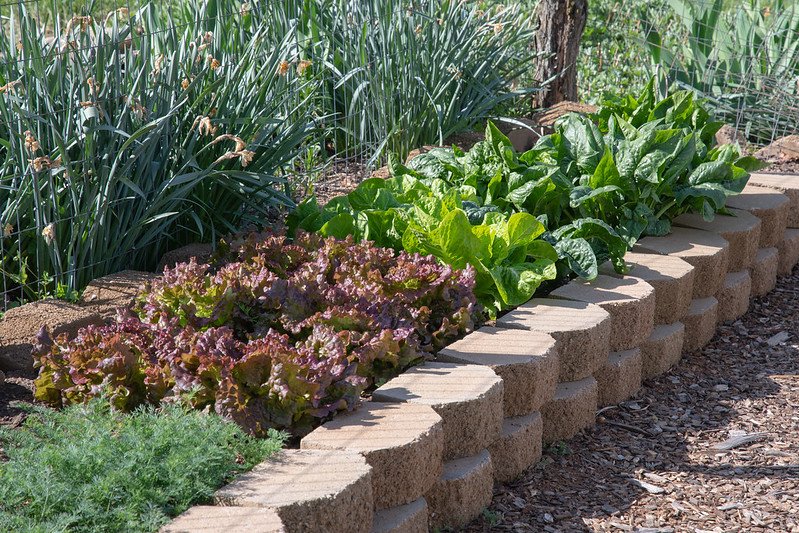by Barb Levisay
Gardening techniques have evolved over the past twenty years to work more closely with nature. During our April workshop, we talked about some of the best practices that help gardeners get the most from crops and flowers without harming the enviornment. For the vegetable garden, we talked about no-till beds, natural pest control, and crop rotation. For ornamantal gardeners, we covered incorporating native plants in pollinator-friendly flower beds to support nature in our own back yard.
Vegetable garden best practices
Raised beds have become the preferred vegetable garden design for a number of reasons, including no-till practices, drainage, and disease control.
No-till practices are based on the concept that tilling disrupts the natural biome that creates rich, fertile soil. Raised beds allow soil to be undisturbed over time allowing worms and other soil dwellers to incorporate organic material and aerate.
Raised beds provide better drainage to give plants more consistent moisture.
Soaker hoses can easily be routed through raised beds to deliver water to the base of plants which can reduce spread of disease, especially in tomatoes.
Raised bed with spring lettuce and spinach.
Pests that impact gardens come in many sizes and forms, so natural pest management needs to be multi-tiered. Physical barriers, manual processes, and prevention all play a role in reducing crop damage from deer, insects, and disease.
Fencing is the first line of defense to protect against the abundant deer and small mammals that live in Central Virginia. 5-6 foot fencing is recommended to keep the deer out and some buried underground if groundhogs are in the area.
Daily (or as close as possible) observation is an important factor in natural pest control to head off problems before they get out of control. Handpick hornworms, Japanese beetles, squash bugs, etc. and throw them in soapy water every day to minimize their impact and reproduction.
Prevention practices include crop rotation to reduce the impact of soil borne diseases and weed control to remove the cover where insect pests hide.
Flower garden best practices
Home gardeners can play an important role in supporting our natural ecosystems. By designing our ornamental gardens to provide food, water, and shelter for native species througout the year, we can help reverse the loss of natural habitat.
Flower garden combines native plants like yarrow and phlox with cultivars like daylilies and zinnias.
Pollinator-friendly gardens are a great first step in supporting native wildlife. To make an ornamental garden more pollinator friendly, stop using pesticides, incorporate native plants and add a source of water. Plant in layers with taller plants to the back and shorter in the front to provide cover and a variety of food sources. Don’t clear out beds at the end of the season to give bees and other insects cover during the winter.
Plants that are native to central virginia have become more widely available and there are many resources online now, like https://www.plantvirginianatives.org/ to guide plant selection. There are native plants to fit any garden site, from deep shade to full sun. Evaluate your site first and then select the right plant.
One of the joys of gardening is that you are always learning. Best practices in gardening are changing rapidly in response to a better understanding of how we can have a positive impact on nature.
Next gardening workshop May 20th
There are more gardening workshops planned. Join us on April 15th for Tomato and Pepper Success to find out how to maximize your harvest from tomatoes and peppers. Mark Levisay has been growing bumper crops of tomatoes and peppers in Central Virginia for 30+ years. He’ll talk about all the factors that will impact your plants success like plant selection, pest management, suckering, watering, and more. 1 hour, with plenty of time for Q&A.
If you have a gardening question, send a note to me at barb.levisay@gmail.com.

